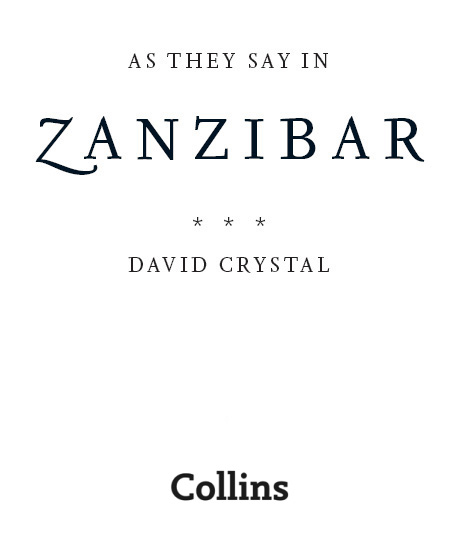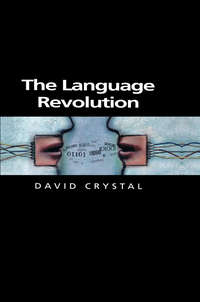
Полная версия
As They Say In Zanzibar



When two elephants tussle, it’s the grass that suffers
ZANZIBAR
CONTENTS
COVER
TITLE PAGE
INTRODUCTION
THEMATIC CLASSIFICATION
LIST OF PANELS
AS THEY SAY IN ZANZIBAR
KEEP READING
FURTHER READING
INDEXES:
1 THEMES
2 BOOK TO ROGET
3 ROGET TO BOOK
4 LEXEMES
5 COUNTRIES
COPYRIGHT
ABOUT THE PUBLISHER
INTRODUCTION
When the occasion comes, the proverb comes GHANA
If there is falsity in a proverb, then milk can be sour INDIA
IS THERE still a place for proverbs in the language of the twenty-first century? When I began to compile this book, I asked several people what they thought of proverbs, and encountered a surprising number of negative reactions. One widely held view maintains that proverbs are clichéd expressions, used by those who have not bothered to think clearly. Another sees them as out of date, a reflection of a bygone age. One person – an Internet geek – told me that he ‘wouldn’t be seen dead using one’, citing ‘Too many cooks spoil the broth’ as a case in point.
There is a curious double-think operating. I later heard that same geek joking with some colleagues about the poor military intelligence that had led a certain government to make some bad decisions. ‘Garbage in, garbage out’, said the geek. The phrase originated in his IT world: if invalid data (garbage) is entered into a system, the output will also be invalid. During the 1990s, the expression came to be applied to an increasingly varied range of situations. Within a decade, it had taken on proverbial status. My anti-proverbial geek was using a proverb without realizing it.
Within a few days of that first enquiry, I heard several people dropping proverbs, or fragments of proverbs, into their conversations. ‘Needs must’, said one. ‘Ask a silly question’, said another. ‘People in glass houses’, said a third. None of them bothered to complete the well-known proverbs. They were taken for granted.
People may not quote proverbs in full as much as they used to, or treat them with the high respect of an earlier age, but they certainly allude to them. Anyone looking out for proverbs in everyday situations would quickly be able to add to the following brief selection:
A university department that was being axed advertised its farewell party under the banner headline: ‘Come and Hear the Fat Lady Sing’.
A TV comedian made a risqué joke based on ‘A bird in the hand is worth two in the bush’.
A US motel trying to attract custom to the claimed comfort of its facilities had a sign outside: ‘The early bird only gets the worm’.
A TV comedy programme called itself ‘Birds of a Feather’.
Proverbs continue to fascinate people. Here is a test anyone can do. Choose one of the less familiar proverbs from this book, drop it into a conversation, and see what happens. My favourite is the Irish proverb Never bolt your door with a boiled carrot. There is invariably an interesting discussion about the proverb’s origins and use. And one proverb then reminds someone of another. It is a bit like punning: when one person makes a pun, others try to do better. Puns are batted back and forth. Some linguists have called this phenomenon ‘ping-pong punning’. There is ping-pong proverbing too. Proverb exchanges and contests have a literary history. You will find one in Shakespeare.
There is something about the proverbs associated with other cultures that allows them to evade the kind of criticism we level at our own native expressions. Whatever else we might say about the following, we would not for one moment call them clichés.
A coconut shell full of water is a sea to an ant (ZANZIBAR)
Don’t call the alligator a big-mouth till you have crossed the river (BELIZE)
An untouched drum does not speak (LIBERIA)
Do not try to borrow combs from shaven monks (CHINA)
Such proverbs do more than express a general truth or universal belief. Each in its own way adds a tiny bit more to our understanding of the world’s linguistic and cultural diversity, and thus helps us grasp more fully what it means to be human.
It is a commonplace of comparative linguistics that every language expresses a unique vision of the world. This is not to say that each language is so different from others that its speakers can never communicate outside their own people. The existence of ‘balanced bilinguals’ – people who have learned two languages from childhood with equal fluency – and the everyday phenomenon of translating and interpreting proves otherwise. Rather, it is to point out that languages are not identical in the way in which they talk about the world. There is a limit to the amount of exact translation equivalence that can be achieved, and people have to be satisfied with an approximation. And it is in this area of approximate equivalence that fascinating cultural differences can be found.
Commentators over the years have drawn attention to the importance of a comparative linguistic perspective on life. Here is Ezra Pound, in The ABC of Reading (1960):
The sum of human wisdom is not contained in any one language, and no single language is capable of expressing all forms and degrees of human comprehension.
And here is George Steiner, in a 1967 essay (‘F R Leavis’):
Is it not the duty of the critic to avail himself, in some imperfect measure at least, of another language – if only to experience the defining contours of his own?
The ideal, of course, is to learn enough of another language to be able to get a sense of the differences directly – to feel the contours, without having to rely on a translating intermediary. The second-best approach is to read, in translation, as much as possible of the culturally distinctive literature of other languages, such as its poems, stories, myths, legends – and proverbs.
A collection of cross-linguistic proverbs is of special interest because it conveys two opposed but equally interesting messages. On the one hand, it draws attention to the differences of expression and perception which characterize the world’s communities. On the other hand, it shows that, to a very great extent, these communities are the same. People recognize, admire and worry over similar things. Notions such as ‘More haste, less speed’ can be found in dozens of cultures. And in such examples as the following, the nuance may vary, but the spirit behind the proverb remains the same:
A guest and a fish after three days are poison (FRANCE)
Seven days is the length of a guest’s life (MYANMAR)
However, this common human perspective is a complication when it comes to compiling a book such as this one, which aims to be illustrative of proverbial diversity and not comprehensive. It is not possible, in a short selection, to include a proverb as it appears in every country; nor – if reader interest is to be preserved – is it desirable. To illustrate the point, consider these variations on the guest theme – just a few taken from Selwyn Gurney Champion’s huge collection of translated cultural proverbs (see Further Reading):
A fish and a guest go bad on the third day and must be thrown out (BASQUE)
Fish and guests smell at three days old (DANISH)
A guest, like a fish, stinks the third day (DUTCH)
A fish and a guest after three days are poison (ENGLISH)
Guests and fish will get old on the third day (ESTONIAN)
The first day a guest, the second a guest, the third day a calamity (HINDI)
Even a welcome guest becomes a bore on the third day (JAPANESE)
We need only one example to appreciate the point, but that means grasping the nettle and selecting one country to represent all. I have endeavoured to introduce as wide a range of countries as possible, when making such choices. There are 110 (apart from England) listed in Index 5.
All anthologies are made with particular audiences in mind, and selections inevitably change over time. Until as recently as thirty years ago, it would have been normal to find in any proverb collection a predominantly masculine bias, reflecting traditional male-dominated society. Many items, both those native to English and those in translation, would have begun with ‘He who …’ or ‘The man who …’. Times have moved on. I have replaced these with a generic usage, unless there is a genuine male v female contrast involved. A remarkable number of proverbs, in many countries, also reflect unpalatable notions, such as the desirability of beating one’s wife to ensure obedience. And most countries have proverbs which are extremely rude about the people, politics, or religion of their neighbours, especially those with whom they have been at war. I have not included these either, wishing to provide a selection which reinforces the ideals of a more tolerant and inclusive age. The dismissive attitudes are available in the older literature cited in Further Reading, should anyone wish to read them.
From a linguistic point of view, I have adopted a sentence-based notion of proverb, as is usual these days. In earlier times, the notion of a proverbial expression covered a wide range of linguistic features, including idioms, riddles, similes, and everyday phrases. John Bull, hard cheese, Merry England, and I told you so have all been called ‘proverbs’ in one collection or another, in times past. All the proverbs in the present collection are sentences, conveying autonomous units of sense in a succinct form. Many display structural balance, parallelism, rhythmical contrast, and other rhetorical features which add to their memorability and help explain their common use. But it is not obligatory for a proverb to have a tightly controlled linguistic structure. What is important is the insight rather than the form.
It is not easy to define proverbs from the point of view of the kinds of insight they express. They are generalizations which express a remarkable range of functions – conveying advice, warning against consequences, predicting likelihoods, and recommending behaviours (such as diplomacy, courtesy, charity, and kindliness). Many are quite literal, such as An apple a day keeps the doctor away. The more interesting ones operate at two levels of meaning. Whatever we can say about the meaning of Don’t burn your candle at both ends, one thing is certain: we are not really talking about candles.
Proverb collections have used many methods of organization, from alphabetical order to a broad thematic classification. For the present book, I felt the most interesting principle would be to organize the material into semantic fields, as it is in these domains that we are likely to encounter interesting cultural comparisons. Semantic fields are ways of organizing words (more strictly, lexemes: see Index 4) into related groups, such as ‘furniture’, ‘fruit’, and ‘parts of the body’.
There is no single way of grouping words (and thus proverbs) semantically. Within the category of ‘parts of the body’, for example, we can distinguish such contrasts as ‘upper’ v ‘lower’, or ‘head’ v ‘trunk’ v ‘limbs’, or ‘arms’ v ‘legs’, or ‘fingers’ v ‘hands’, and so on. For the present book, I have allowed my depth of detail to be influenced by the nature of the proverbial material. Proverbs talk quite a lot about parts of the body, so I have devoted several sections to them (232–250). By contrast, there are very few proverbs devoted to musical instruments, so I have grouped all types of instrument under a single heading (272).
But how to organize the semantic fields into a sequence? Some collections adopt an arbitrary solution, listing them alphabetically, beginning with ‘Ability’ (or some other A-notion) and ending with such categories as ‘Year’ or ‘Youth’. This has the disadvantage of separating groups that we feel should belong together. Others list proverbs according to the ‘most significant word’ – an approach which is doomed to confusion, faced with the many proverbs that contain words that compete for our attention. Which is the most significant word in The sweeter the perfume, the uglier the flies which gather round the bottle? Plainly, all the main words make a contribution to the sense, and all need to be recognized.
I much prefer an approach which sequences proverb categories on the basis of the semantic relationship between them. I could have started from scratch, and devised a new system, but what is the point, when we already have a system of semantic classification that has been in widespread use for the past 150 years? I am referring to Roget’s Thesaurus, first published in May 1852. Roget has become the standard tool for people who want a thesaurus which organizes words into fields of meaning (as distinct from those thesauruses which list words in alphabetical order along with sets of synonyms and antonyms). I felt the level of generality which Roget used in his approach would be close to that required in a thematic classification of proverbs, so I adopted his logic as a means of sequencing the themes I needed to recognize in this book. Sometimes Roget’s categories were too abstract, and I had to break them down into more specific domains. Sometimes they were too narrow, and I had to group them into broader types. But on the whole the exercise was helpful, and many of my themes are in a one-to-one relationship with Roget’s. The approach may also help those who wish to take Roget in new directions. I have always regretted the absence of proverbs in that work, and Indexes 2 and 3 of the present book can be used to add a proverbial dimension to it.
How then to handle the complexity of such proverbs as The sweeter the perfume, the uglier the flies which gather round the bottle? If one of the constituent words stood out – flies, say – it would be possible to place the proverb into the appropriate category (‘Insects’) and cross-refer all the other words to it. But that would mean five cross references – from sweet, perfume, ugly, gather round, and bottle. Clearly, such a method of classification would flood a book with cross references, and readers would be forever jumping around with their fingers in different pages.
The alternative is to place the proverb into each of the semantic fields that its constituent words belong to. So, we would locate this proverb once under ‘Bottles’, once under ‘Sweet’, and so on. The demerit of this approach is that a single proverb appears several times throughout the book. But this is far outweighed, in my view, by the convenience of seeing each proverb in its appropriate semantic place, without the need for cross reference. The statistics are as follows: the book as a whole has some 7,500 listings, representing 2,015 different proverbs, grouped into 468 semantic fields, representing around 650 themes. For a list of the semantic fields and their order, see the Contents page. For a complete listing of all the themes recognized within these fields, see Index 1.
Anthologies are never finished, only abandoned. In the case of proverbs, one has to recognize very early on that the field is one of extraordinary magnitude. The proverbs of the world are numbered not in thousands but in millions. What is a couple of thousand among so many? I believe that small-scale compilations have their place, for there are still many avenues in the investigation of proverbs which remain to be explored. For this book, I have attempted to integrate just two dimensions – the cross-cultural and the semantic. But they are dimensions which are not usually considered together, and I hope thereby to make a small contribution to the evolution of this fascinating field.
This has also been an exercise in standing on shoulders. My research has taken me from the early classical collections, such as Ray’s Proverbs of 1767, into modern popular collections, of the ‘Thousand Chinese Proverbs’ type, and from there into the World Wide Web, where there are now some remarkable intercultural sites. I give some references in Further Reading. I warmly acknowledge the help I have had from earlier paremiographers, and hope that this latest anthology does them, and their field, no disservice.
David Crystal
THEMATIC CLASSIFICATION
1 Existence
2 Family
3 Sameness
4 Difference
5 Small amount
6 Large amount
7 Increase – Decrease
8 One alone
9 One of two
10 One of several
11 Accompaniment
12 Two – Twice – Both
13 Three – Third
14 Four or more
15 Next to nothing
16 Multitude
17 Better – Worse
18 Uniting
19 Separating
20 Chain – Rope – String
21 Whole – Part
22 Full – Entire
23 Empty – Lacking
24 Sequence – Order
25 Assemblages
26 Contents
27 Kinds
28 Always happening
29 Conformity
30 Repetition
31 Time
32 Years – Seasons – Months – Weeks
33 Days – Nights
34 Mornings – Afternoons – Evenings
35 Hours – Minutes – Seconds
36 Long time
37 Never
38 Clocks – Watches
39 Beginnings – Endings
40 Beforehand
41 Afterwards
42 Past – Present – Future
43 Sooner or later
44 Newness
45 Oldness
46 Age
47 A time and a place
48 Sometimes
49 Lasting
50 Ceasing
51 Changing
52 Happenings
53 Cause – Effect
54 Strength – Weakness
55 Production
56 Destruction
57 Force
58 Parents – Children
59 Locations
60 Standing – Sitting – Lying
61 Finding
62 Home – Abroad
63 Countries
64 Cities – Towns – Villages
65 Where to live
66 Houses
67 Doors – Windows – Keys
68 Guests
69 Absent – Present
70 Bags – Sacks
71 Barrels – Casks
72 Baskets
73 Bottles – Cans
74 Cups – Glasses
75 Dishes – Plates
76 Pots – Bowls – Jugs
77 Spoons – Ladles
78 Wells
79 Other containers
80 Loads
81 Big size
82 Little size
83 Big v Little
84 Distance
85 Nearness
86 Long – Short
87 Middle – Ends
88 Wide – Narrow
89 Hairs – Threads
90 High – Low
91 Depth
92 Hills – Mountains
93 Top – Bottom
94 Holding
95 Support
96 Tables – Chairs
97 Upright – Falling
98 Outside – Inside
99 Covering
100 Clothing
101 Bodywear
102 Footwear
103 Headwear
104 Weaving
105 Between
106 Walls
107 Edges
108 Enclosures
109 In front – Behind
110 Sides
111 Building
112 Straight – Bent – Crooked
113 Roundness
114 Prominences
115 Holes







